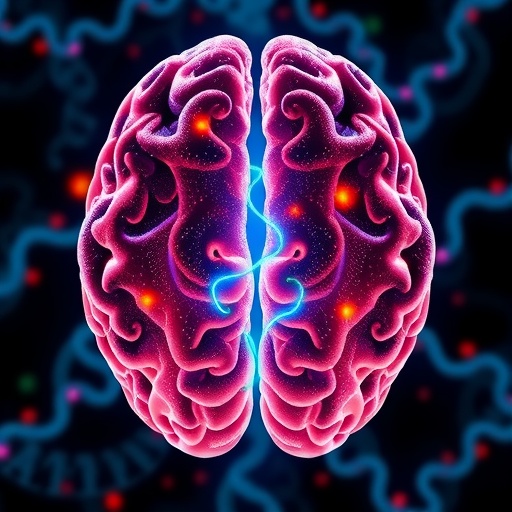In a groundbreaking study published this year, researchers have leveraged the power of deep adversarial learning to unearth novel associations between apoptotic genes and the white matter microstructure within a critical neural circuitry implicated in Attention-Deficit/Hyperactivity Disorder (ADHD). This pioneering approach not only sheds light on the intricate biological underpinnings of ADHD but also presents a compelling example of how cutting-edge machine learning techniques are revolutionizing the landscape of neuropsychiatric research.
ADHD is a complex neurodevelopmental disorder affecting millions worldwide, characterized by symptoms such as inattentiveness, hyperactivity, and impulsivity. Despite its prevalence, the precise biological mechanisms driving ADHD have remained elusive. Traditionally, research has focused heavily on neurotransmitter dysregulation and cortical abnormalities. However, this new study introduces a fresh perspective by investigating the apoptosis-related gene pathways that may influence white matter integrity in key brain circuits that govern cognitive and behavioral control.
At the core of this investigation lies the frontal-striatum-cerebellum circuit, a network well-recognized for its role in executive functions, motor control, and behavioral regulation—domains often impaired in individuals with ADHD. White matter within these regions coordinates communication between disparate brain areas, and its structural abnormalities have been repeatedly documented in ADHD cohorts. Yet, the molecular drivers affecting these microstructural parameters were previously underexplored. By integrating genomic data with neuroimaging metrics, the researchers aimed to bridge this gap.
The study employed an innovative deep adversarial learning framework—an advanced form of artificial intelligence that pits two neural networks against each other to enhance predictive accuracy and uncover subtle patterns in data often missed by conventional statistical methods. This method allowed the team to analyze vast, multimodal datasets comprising genetic profiles and diffusion tensor imaging (DTI) scans, thereby capturing the nuanced interactions between gene expression and brain microstructure.
Through this approach, the research identified distinct associations between apoptotic gene expression profiles and fractional anisotropy values, a measure of white matter integrity, specifically localized within the frontal-striatum-cerebellum circuit. Apoptosis, or programmed cell death, is a fundamental biological process essential for neural development and homeostasis, and alterations in apoptotic pathways have been implicated in several neuropsychiatric disorders. The findings suggest that dysregulated apoptosis may contribute to white matter abnormalities observed in ADHD, providing a potential molecular target for therapeutic interventions.
This study marks a crucial step forward in deciphering the molecular architecture of ADHD. By elucidating the role of apoptosis-related genes in shaping white matter microstructure, it challenges conventional paradigms that predominantly emphasize neurotransmitter imbalances, highlighting the multifaceted nature of ADHD pathophysiology. Additionally, the utilization of deep adversarial learning underscores the transformative potential of artificial intelligence in unraveling complex brain-gene interactions.
The implications of these findings extend beyond academic curiosity. Understanding how apoptotic mechanisms influence brain connectivity opens new avenues for precision medicine approaches tailored to individuals’ genetic and neuroanatomical profiles. Such personalized strategies could optimize treatment efficacy and minimize adverse effects—an urgent need in ADHD management, where therapeutic responses vary widely.
Moreover, these insights advance the broader field of neuropsychiatric research by showcasing the feasibility of integrating multi-omics data with neuroimaging through sophisticated AI-driven methodologies. The capacity to translate multidimensional datasets into clinically meaningful knowledge represents a leap toward more holistic models of brain disorders that consider genetic, structural, and functional dimensions simultaneously.
Importantly, the study also lays the groundwork for future longitudinal research designed to track apoptotic gene expression and white matter changes over developmental stages. This dynamic perspective might unravel whether observed alterations are causative contributors to ADHD onset or compensatory mechanisms responding to early neural disruptions. Such knowledge is critical for timely interventions.
By harnessing adversarial learning algorithms, the research team overcame common challenges in neurogenetics, such as limited sample sizes and high-dimensional data complexity. This establishes a methodological blueprint that other investigators can adopt to explore diverse psychiatric conditions where underlying biology remains concealed beneath layers of heterogeneous clinical presentations.
The meticulous analytic pipeline incorporated rigorous cross-validation and robustness checks, ensuring that identified gene-brain associations are not artifacts or byproducts of confounding factors. This level of computational rigor strengthens confidence in the reproducibility and translational relevance of the results, addressing a perennial concern in machine learning applications to biomedical sciences.
In summary, this study represents a synthesis of computational innovation and biological insight, demonstrating that apoptotic pathways are intimately linked with microstructural brain signatures implicated in ADHD. The research heralds a new era where artificial intelligence not only accelerates discovery but also deepens our understanding of neuropsychiatric disorders’ molecular bases.
As scientists continue to decode complex brain disorders, this work exemplifies the promising synergy between genetics, neuroimaging, and machine learning. It invites a reevaluation of ADHD pathogenesis, encouraging the scientific community to expand investigative frameworks and embrace technology-driven integrative research paradigms.
Ultimately, these advancements offer hope for better diagnostic tools and targeted therapies, which could improve quality of life for millions affected by ADHD. The study’s profound insights affirm that the future of neuroscience relies heavily on interdisciplinary collaboration powered by artificial intelligence.
The full article, “Deep adversarial learning identifies ADHD-specific associations between apoptotic genes and white matter microstructure in frontal-striatum-cerebellum circuit,” is a seminal contribution that embodies the frontier of psychiatric neuroscience research. It is a testament to the transformative potential of merging computational intelligence with biological inquiry.
Researchers and clinicians alike will likely find this work foundational, inspiring novel hypotheses and clinical strategies aimed at elucidating and mitigating the impact of ADHD globally. Continued exploration in this vein promises to unlock further mysteries of the human brain and its complex disorders.
Subject of Research: Associations between apoptotic genes and white matter microstructure in the frontal-striatum-cerebellum circuit of individuals with ADHD using deep adversarial learning.
Article Title: Deep adversarial learning identifies ADHD-specific associations between apoptotic genes and white matter microstructure in frontal-striatum-cerebellum circuit.
Article References:
Zhao, Y., Zheng, X., Gao, X. et al. Deep adversarial learning identifies ADHD-specific associations between apoptotic genes and white matter microstructure in frontal-striatum-cerebellum circuit. Transl Psychiatry 15, 320 (2025). https://doi.org/10.1038/s41398-025-03493-2
Image Credits: AI Generated




